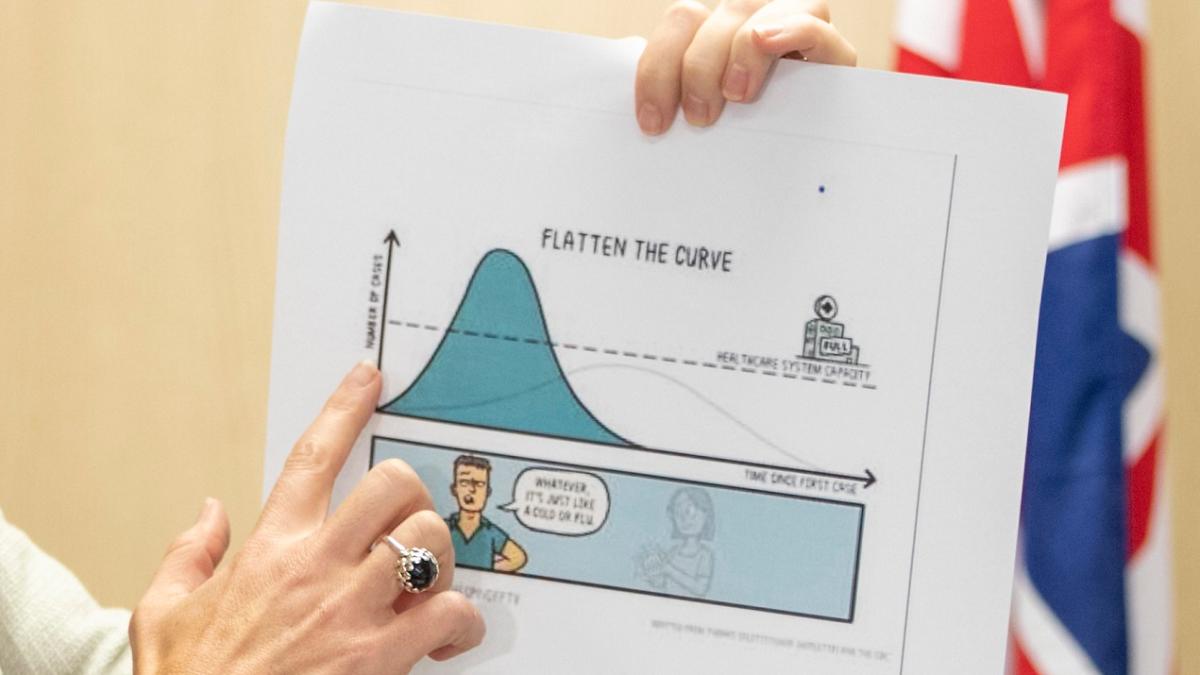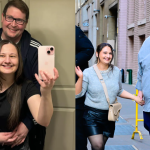
Adjusting our daily lives during Australia’s coronavirus (COVID-19) outbreak is vital. It’s also difficult, and I haven’t done it perfectly.
But from here on out, I’m looking to “flatten the curve.”
Here’s my confession. On Saturday, I caught up with some friends to, ironically, discuss the necessary postponement of an overseas holiday. We met at a small restaurant in Melbourne, before walking down the road for a drink in a near-empty bar. None of us have displayed any symptoms of the virus, nor have we knowingly come into contact with any confirmed cases. We haven’t traveled overseas in recent weeks. I didn’t share food or drinks with others. We also avoided other groups, and I kept physical contact to a minimum.
In retrospect, we probably could have ditched the meet-up entirely.
Perhaps I was still buoyed by official messaging from the City of Melbourne, barely a month old, saying the community should continue to visit hard-hit restaurants. Maybe the previous day’s announcement, that public gatherings greater than 500 should be canned, gave me a sense of security about our small get-together.
But one argument against similar meetups now overshadows all others, in regards to the spread of COVID-19: we have to “flatten the curve”, so to speak, doing everything we can to distance ourselves from others to stall the virus’ spread through the Australian community.
View this post on Instagram
What is “flattening the curve”? According to Australia’s Chief Medical Officer Professor Brendan Murphy, it’s the idea that we can slow the community spread of COVID-19 by limiting all unnecessary interactions with others. Doing so will protect our health system from becoming overwhelmed with people presenting with the symptoms of COVID-19.
“I want to say that this is a pre-emptive move to get ahead of the curve,” Professor Murphy said on Saturday.
“Social distancing can be difficult for the community, we understand that, and we understand that the community is with us on the need to try and slow the spread of this virus in our community.”
The curve in question is the total number of cases our healthcare system is capable of handling. Statistical models show that if we enact social distancing — that is, the conscious decision to limit our contact with others — the number of potential viral exposures drops, meaning a flatter curve of total cases over time.
Those same models show the curve skyrocket without social distancing practices in place, potentially smashing our healthcare system.
Health experts are shouting that the most important goal right now is to “flatten the curve,” to prevent a surge in patients all at once that overloads the system, as we’re seeing in Italy, because we don’t have the capacity. pic.twitter.com/X1SR1vFU59
— Jake Tapper, long-suffering Philly sports fan (@jaketapper) March 12, 2020
We’re not there — yet. But, given the fact people without any visible symptoms of the virus can still transmit it, and the reality that symptoms can take up to 14 days to materialise, there’s a likelihood that young, healthy-looking Australians are unknowingly infecting others.
I cannot stress to you enough how valuable I’ve found The Washington Post’s data visualisation on this whole issue. I urge you to watch those simulated viral outbreaks, and gasp as you realise the positive impact of social distancing.
We can see the positive impacts of social distancing in real life, too. Data released by John Hopkins University and compiled by BuzzFeed News compares COVID-19’s impact on South Korea and Italy, two nations rocked by the virus.
In the 24 days since counting its 100th infection, South Korea, which attacked the virus’ spread with a mix of rigorous testing, contact tracing, and social distancing measures, recorded 8,162 cases total.
South Korea’s success at battling back #Covid19 is extraordinary. Only 76 cases on March 14.
Look at this curve. Amazing.
Don’t focus on the blue line. Look at the green bars. pic.twitter.com/ScHzIyN7IH— Helen Branswell 🇺🇦 (@HelenBranswell) March 15, 2020
By comparison, in the 21 days since clocking their 100th case, Italy tallied more than 20,000 infections. The exact causes of that devastating figure are yet to be determined, but the nation is now enforcing some of the strictest isolation measures on the planet to catch up with the outbreak.
As of yesterday, Australia has confirmed 249 local COVID-19 infections. That’s close to the number Italy counted three weeks ago. It was only after hitting that number that Italy postponed stadium-filling football games, banned gatherings at public hotspots, and, finally, enacted a nationwide lockdown. We have the jump on that scenario. I think we should take advantage of that.
We can see the benefits of social distancing, and what happens when those measures aren’t in place. While there are unavoidable situations, like grocery shopping, and, for many Australians, work itself, we know a broad reduction of interpersonal contact will save lives.
Critically, it will save the lives of those who are more susceptible to the worst impacts of the virus. There’s a good chance you or I could go about our daily lives without even knowing we have COVID-19, but our contact with senior or immuno-compromised Australians could prove fatal.
Don’t get me wrong: I love having a quiet night out with mates, even if it is to commiserate over a postponed holiday. I now reckon those chats can stay online, for the time being.
Of course, if you have come into contact with someone who has the virus, you should self-isolate for 14 days. If symptoms develop you should call your doc or the Australian Government’s National Coronavirus Helpline on 1800 020 080.







